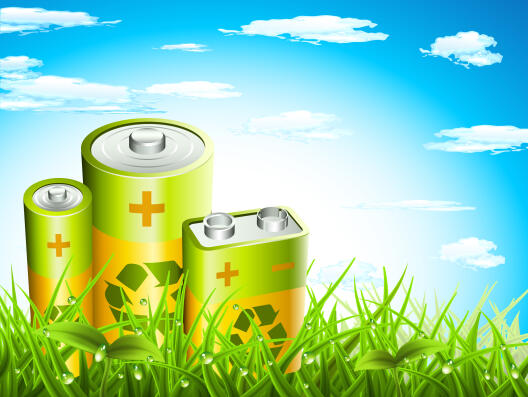Sustainability & Recycling: Hot Topics of Battery Research and Education
As more and more energy storage systems are required worldwide, battery research clearly gains further momentum. Next to needs like high energy density, long life cycle with consumer-acceptable safety or economy, recycling and sustainability show up to be the inevitable hot topics in research.
Sustainability challenges span the entire life cycle of energy storage systems like the widely spread lithium-ion batteries (LIB): from raw material extraction and battery material production, to cell and battery pack production, battery utilisation, and to possibilities for second life usage and recycling. While research has to address a wide range of topics, this must also be reflected in the education of battery researchers.

Sustainable Materials for “Green” Batteries
Sustainable materials are one central research area and approaches are manifold: For example, cobalt in the cathode of the LIB is to be replaced in the long term, as the raw material is scarce and one of the cost drivers in production. Furthermore, the conditions during mining are considered questionable. Sustainably available materials such as sodium and sulphur or renewable raw materials can play a decisive role in this area. However, alternatives – for example organic cathode materials that are free of transition metals – are currently failing due to their low energy density and their instability in classical electrolytes of the LIB. This makes it essential to continue research into alternative battery technologies. One of the great challenges of switching to “greener” materials is the interactivity of the often highly reactive chemical materials: As soon as one component is replaced, all components of the battery cell and thus its performance is affected.
Research Needed in Battery Cell Production, Recycling and Second Life
The production process of the LIB currently still faces numerous ecological challenges such as energy‐intensive material production (current collectors, graphite, and metal oxides), fluorinated and toxic compounds (electrolyte, cathode binder, and metal oxides), costly electrode processing (nonaqueous solvents used for processing of cathodes) and energy‐intensive cell production.
Since production processes of LIB cannot be transferred 1:1 to the vast majority of follow-up technologies, further research is needed on new process technologies, manufacturing environments and skills for post-lithium-ion-batteries (PLIB) – considering sustainability from the outset.
Moreover, recycling rates of the current standard LIBs are low due to several reasons like lacking technical constraints, economic barriers, logistic issues, as well as regulatory gaps. In addition, since many batteries e.g. from mobile devices are not used to the end of their capacity, they should be transferred to a second, often stationary application, the so-called “second life”. This spreads the CO2 emissions of the battery over a longer period. A huge variety of questions to solve and impulses to place for battery research.
Interdisciplinary Battery Research to Reach Full Sustainability Potential
Not only required research topics are diversified, disciplines involved quickly show the need for interdisciplinary cooperation in order to explore recycling and sustainability in detail. While natural scientists address e.g. materials or methods used, engineers focus on production and machines, economists carry out systems-level economic assessments that comprehend potential sustainability trade-offs. All of these contributions are critical if energy storage technologies are to reach their full sustainability potential. Research on sustainability is not an option but rather an enabler for the urgently needed energy transition and opens up a wide range of possibilities for graduate students and postdocs.
